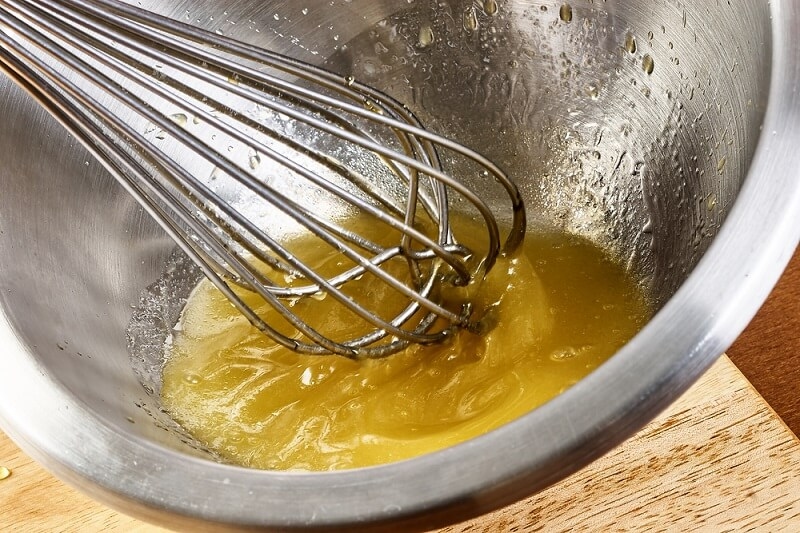
By mastering the basic techniques of emulsification sauces at home, you can turn simple meals into restaurant-worthy dishes. From the silky feel of homemade mayo emulsification to the shine of a pan sauce emulsifying butter, you will be a step ahead of the game if you understand the principles of emulsification. In this guide, you’ll learn everything from how to make and stabilize the sauces, how to rescue a broken sauce and some important hollandaise tips. Whether you're a weekend chef or foodie at heart, this is your trusted guide to creating perfect sauces no matter what.
Emulsification is the process of mixing two liquids that don't commonly mix—usually oil and water—so they stick together into one stable mixture. Think of oil and vinegar with a vinaigrette; alone, they are separate, but with the right technique and stabilizer, suddenly you've emulsified them into a smooth, homogenous sauce! Emulsification sauces rely on basic techniques that any home cook can master. With the proper emulsifier—such as egg yolk, mustard, or garlic—and careful mixing, essentially all sauces from creamy mayonnaise to pillowy hollandaise are possible. This is a straightforward process that has the potential to add elevated flavor and texture to the everyday cook's toolbox.
There are two main types of emulsions:
In traditional definition, an emulsion is a group of small droplets of one liquid suspended in another. For stable emulsification sauces, you will want three ingredients:
Essential emulsification rule: slowly add the fat while whisking so that tiny droplets form. This ensures correct suspension and avoids breaking.
Making your own mayonnaise is one of the easiest and most fun emulsification sauces to learn. With just three ingredients—egg yolk, lemon juice or vinegar, and neutral oil—you can whip up a deliciously rich, creamy sauce that is wayyyy better than what you can find in grocery stores. Mustard is optional, but it provides a nice tang and it helps to stabilize the emulsion. Whisking the egg yolk mixture and slowly pouring in the oil, while whisking constantly, is the trick to it all coming together to develop an emulsion that becomes a thick glossy sauce. This is such a generic recipe that exhibits the emulsification process beautifully in your own kitchen!
This homemade mayo can be used as a base for aioli, ranch, or chipotle mayo. The secret to homemade mayo emulsification is a slow, steady add of oil.

Vinaigrettes are a textbook example of a short-term emulsion, but that doesn't mean they can't be stabilized. Here's how to prepare a stable vinaigrette:
Apply this technique not only to salad dressings but also to marinating vegetables or meats. With these vinaigrette stability secrets, your dressings will remain cohesive and delicious longer.
One of the more sophisticated usages of emulsification sauces is in the pan sauce. A pan sauce is a sauce made after searing meat that uses the fond (the browned bits) for flavor. What's the secret to getting them silky? Yes, you guessed it. Emulsifying butter.
This technique, called "monter au beurre," produces a rich, shiny finish. For pan sauce emulsifying butter, the secret is low heat and frequent movement to prevent the sauce from breaking.
Hollandaise is one of the five French "mother" sauces—and one of the most finicky. It's a warm emulsion of egg yolks and melted butter, usually seasoned with lemon juice.
Most sauces are variations of hollandaise, like béarnaise or mousseline. With these tricks for hollandaise, you'll never dread brunch.
Even the most diligent cooks may find themselves with a broken sauce. But don't worry, all hope is not lost. This is how to rescue your emulsification sauces.
Broken sauces frequently happen when fat is added too quickly or when cooking at high heat. Learning to perform a broken sauce rescue can salvage dinner and make you more confident in emulsification.
To help create great emulsification sauces, good tools help:
A successful emulsification sauce isn't a matter of luck—it's a matter of technique and control. The proper equipment assists you in both.
Emulsification sauces are not just a matter of technique—there's a canvas for creativity here. Try these flavor variations:
Flavor is an extension of your base emulsion—get creative and make each sauce your own.
When emulsification sauces fail, it's often because:
Whisk hard always, and don't omit stabilizers such as mustard or yolk when necessary.
Why bother with all this for emulsification sauces? Because they:
Practicing emulsification sauces enables you to cook with accuracy, confidence, and style.
Whether you’re perfecting homemade mayo emulsification, finishing steaks with a pan sauce emulsifying butter, or using those vinaigrette stability tips for perfect salads, emulsification is a gateway to better, more elegant meals. Don’t fear the broken sauce rescue—learn to embrace it as part of the journey. And with the right hollandaise tips, you’ll be impressing brunch guests in no time.
Emulsification sauces are more than kitchen technique—they're a party for taste, texture, and the virtues of patience. Prepare your sauces from scratch, take risks, and indulge in the science and artistry of each silky, shiny bite.
This content was created by AI